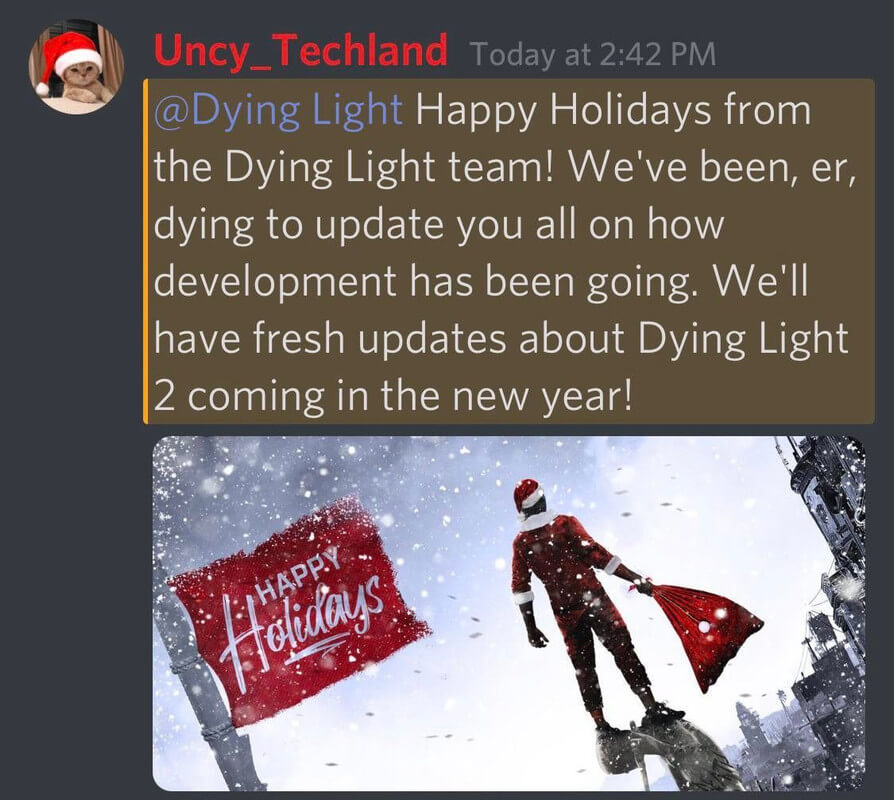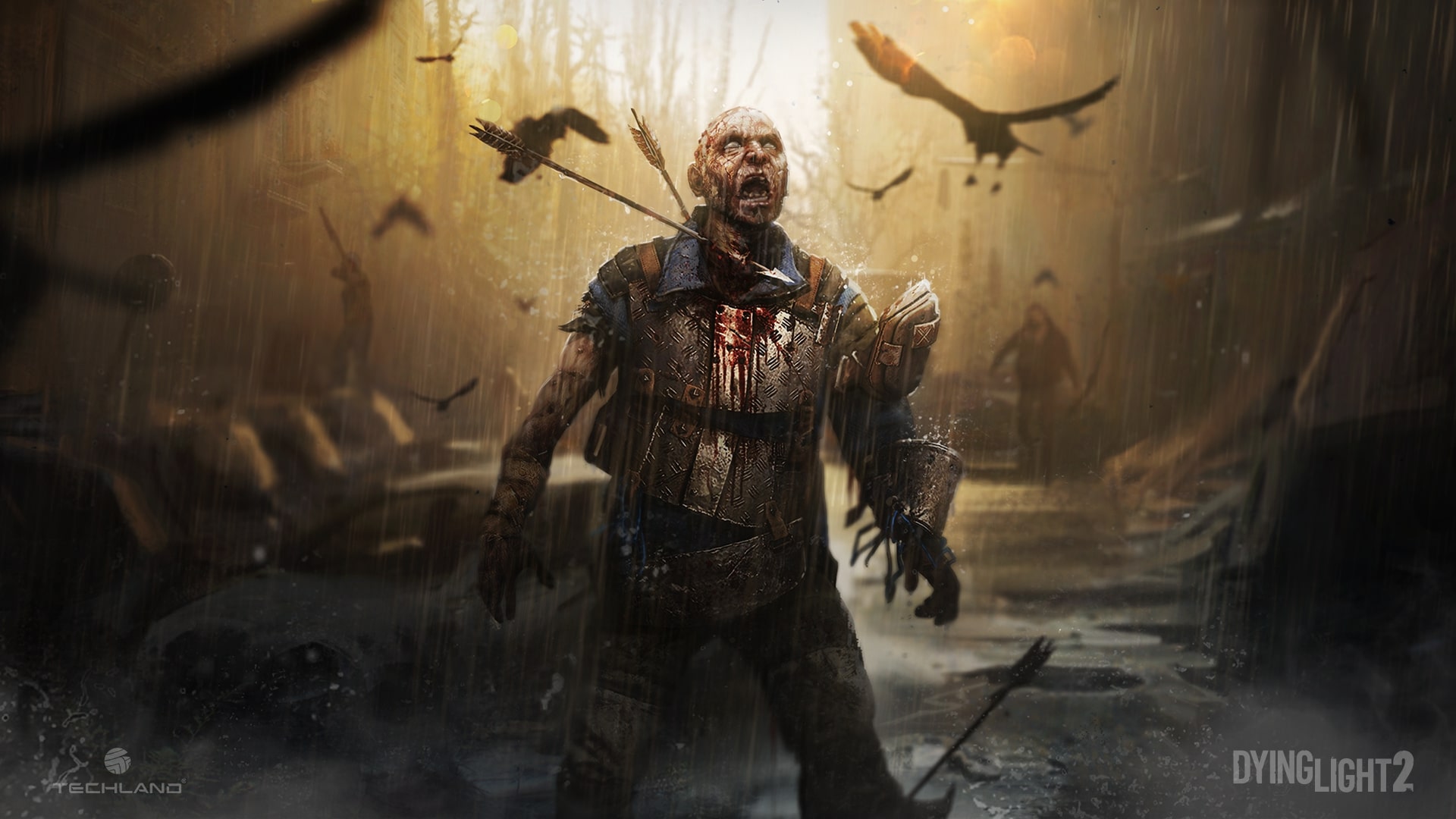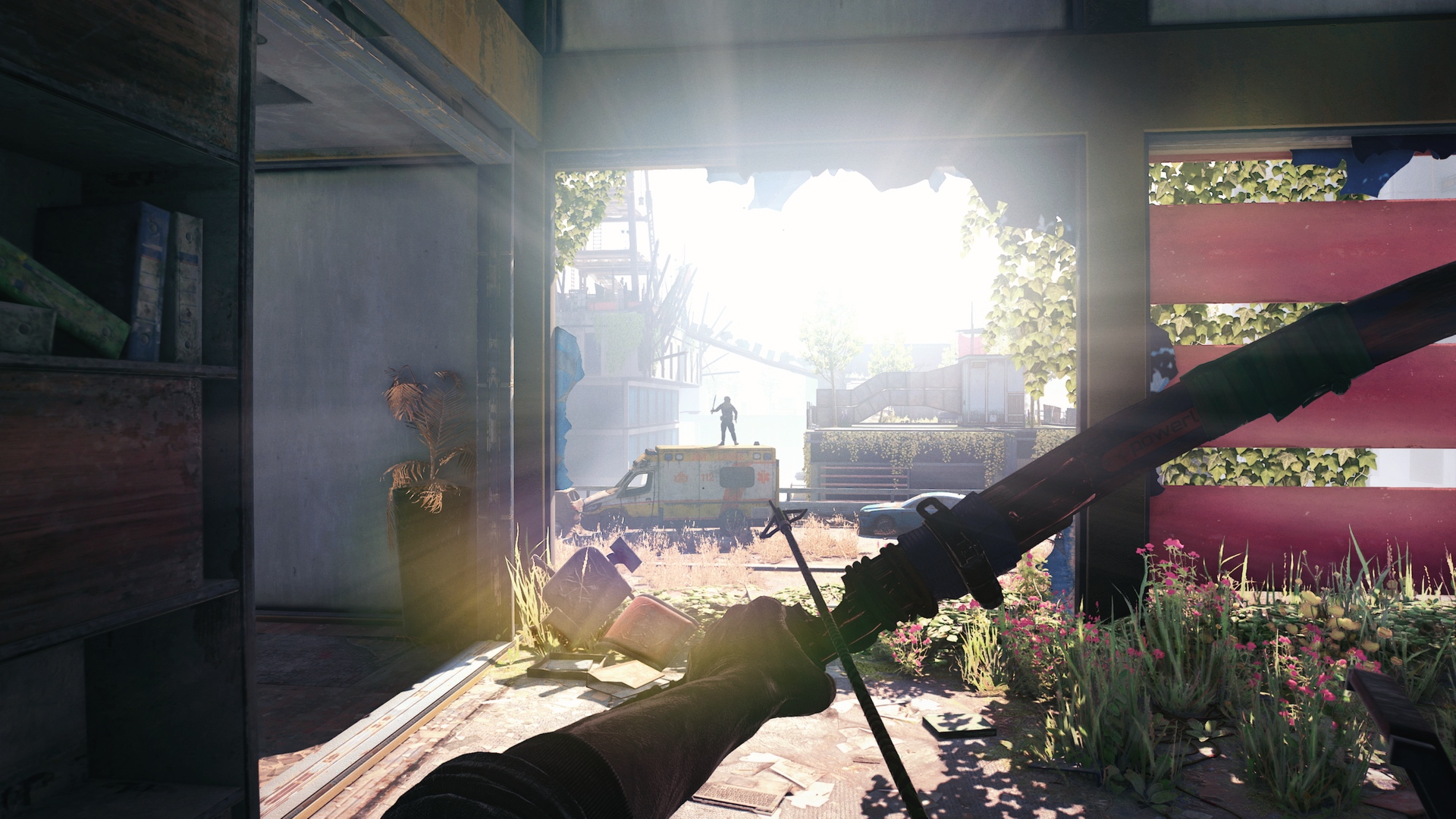

Like making the decision of whether to share valuable information with the survivors back at the Bazaar, or taking that information back to the law-enforcing Peacekeepers.

I encountered several points in my playtime where I was offered choices between siding with one faction or another, and while I can’t really comment on how deeply those choices may have affected the overall narrative, they seemed pretty dramatic. The final pillar of Dying Light 2’s design, and one that wasn’t present in the first game, is that its choices have consequences, both in terms of the story and the actual gameplay. The longer you stay within the range of the infected though, the more your chase meter fills, with each new level calling in more and more dangerous threats, until finally, it gets to level four, at which point you’re in big trouble. Instead, there are special infected called howlers that will alert the horde to your presence when they spot you, triggering a GTA-like multi-tiered chase sequence that forces you to either run away and break line of sight, or stand and fight until there’s no one left to give chase. Volatiles no longer just roam around the city – or at least they didn’t in my experience. Then there are also side missions that can only be completed during the night time and special open world events, like GRE Anomalies, which are mini-boss fights against powerful infected.īeyond that, hanging around during the night is not quite as dangerous or as scary as it was in the past. During the night, however, those infected will leave and take to the street, leaving interiors mostly unguarded and making the valuables found within much easier to scrounge up. During the day, a large amount of infected will hide inside buildings, making them very dangerous to explore. To address this, Techland is making the incentives to explore during the night much more obvious and clear-cut. Some thought it was too hard, too scary, or didn’t really understand why they should even bother. Smektala told me that they realized that in the first game, a lot of players didn’t engage with the night for a number of reasons. The one thing that has seen a complete shift from how it worked in the previous game is the day/night cycle. Unfortunately, I didn’t get deep enough in the combat skill tree to really say how successful Dying Light 2 will be at accomplishing this specific goal, but nevertheless, combat seems impactful, action packed, and loaded with a ton of creative options thanks to an expansive arsenal of moddable melee weapons, craftable tools, and upgradeable skills. To that end, one of the earliest abilities you get in Dying Light 2 is the ability to vault off an enemy and drop kick another in the face, sending them flying. Speaking with Tymon Smektala, lead designer on Dying Light 2, he told me that one of the goals this time around was to combine parkour and combat so that players wouldn’t just run to an encounter, stop, kill all the enemies, and then continue on their way. Dying Light also stands out among other similar zombie survival games thanks to its brutal melee combat, which feels mostly the same here in the sequel. The fluidity of movement is just one piece of the puzzle. Much like any of the big cities you’d see from the Fallout series, the Bazaar is teeming with its own culture and personality, between the church imagery, the sweaters and hoods worn by its inhabitants very clearly looking like medieval chainmail, and the near complete lack of technology all driving home the “modern dark age” theme. The Bazaar is actually just a large church in the middle of Old Villedor that a group of survivors have turned into their home by fortifying its walls, adding small farms, and turning the interior into an actual makeshift city complete with shops, weaponsmiths, hand painted wooden signs – along with scattered UV lights to help fend off the infected. Humanity has fallen back into a modern medieval period, and nowhere is that more apparent than the Bazaar, which serves as the primary safe zone in Old Villedor, the place where the bulk of my play session took place. That’s changed in Dying Light 2, which takes place 20 years after the collapse of society. The original’s open world was a highlight due to how it was designed to be a playground for your parkour skills, but it was so grounded in reality that it really didn’t have a distinct visual style.

The first thing that really struck me about Dying Light 2 was its world.


 0 kommentar(er)
0 kommentar(er)
